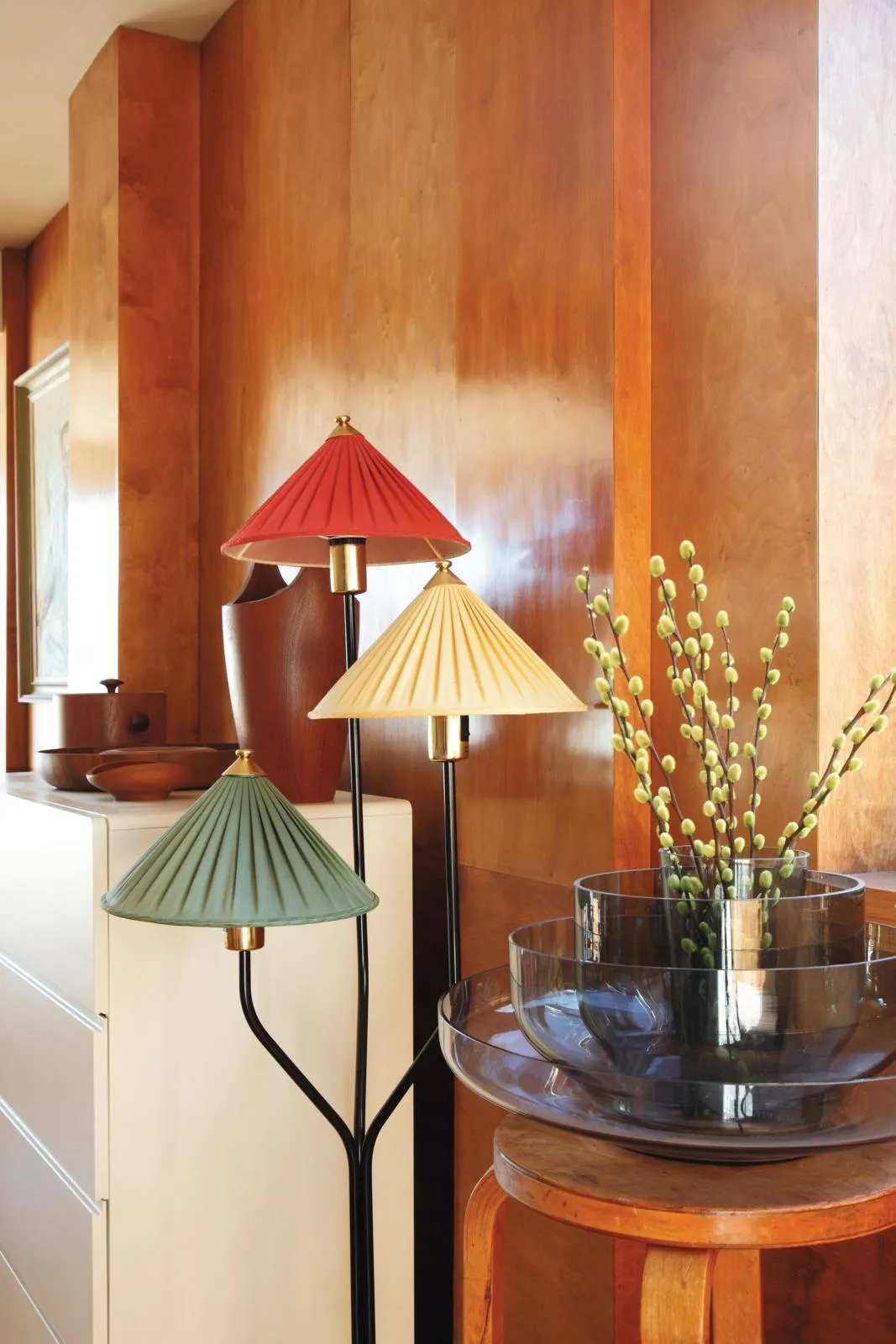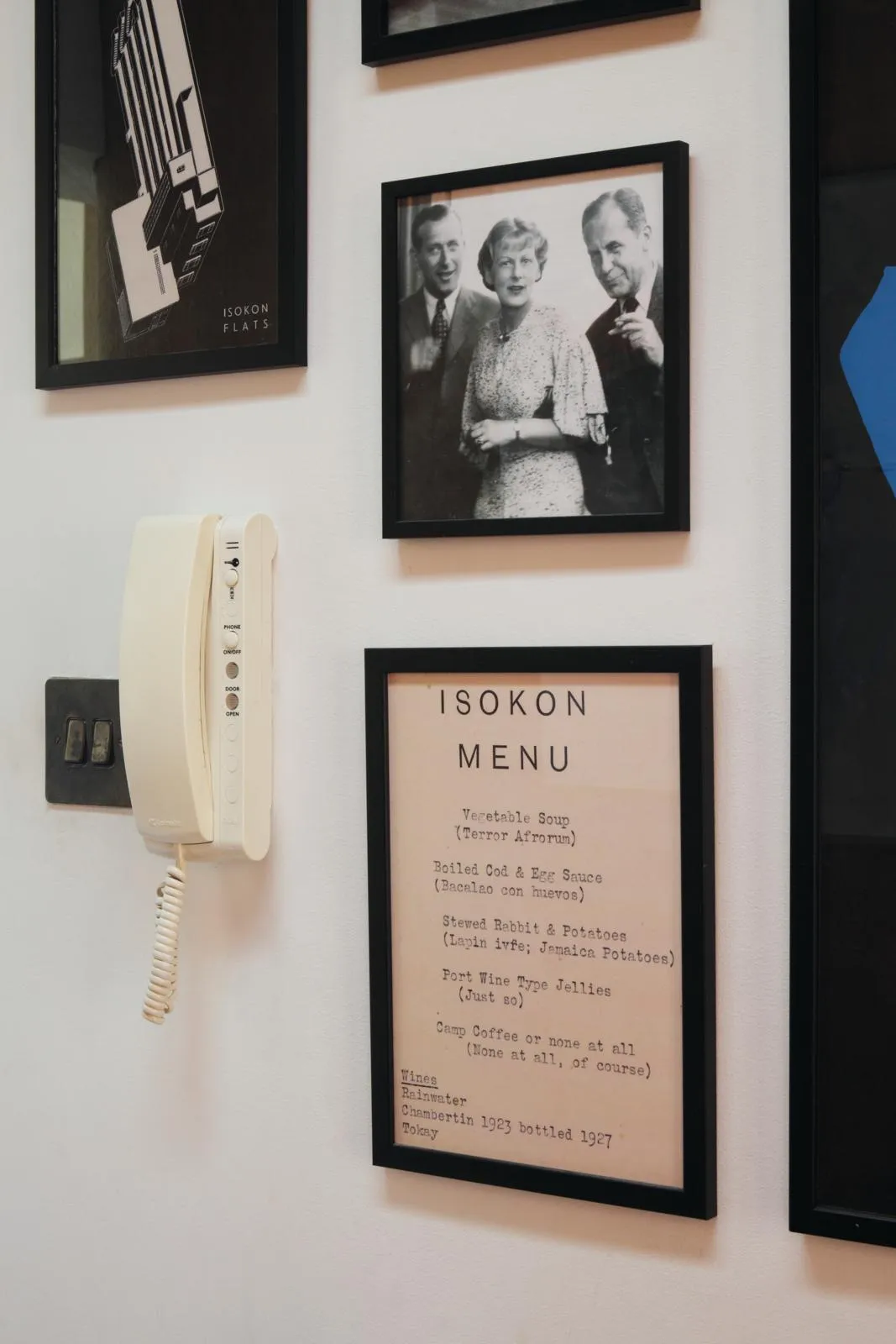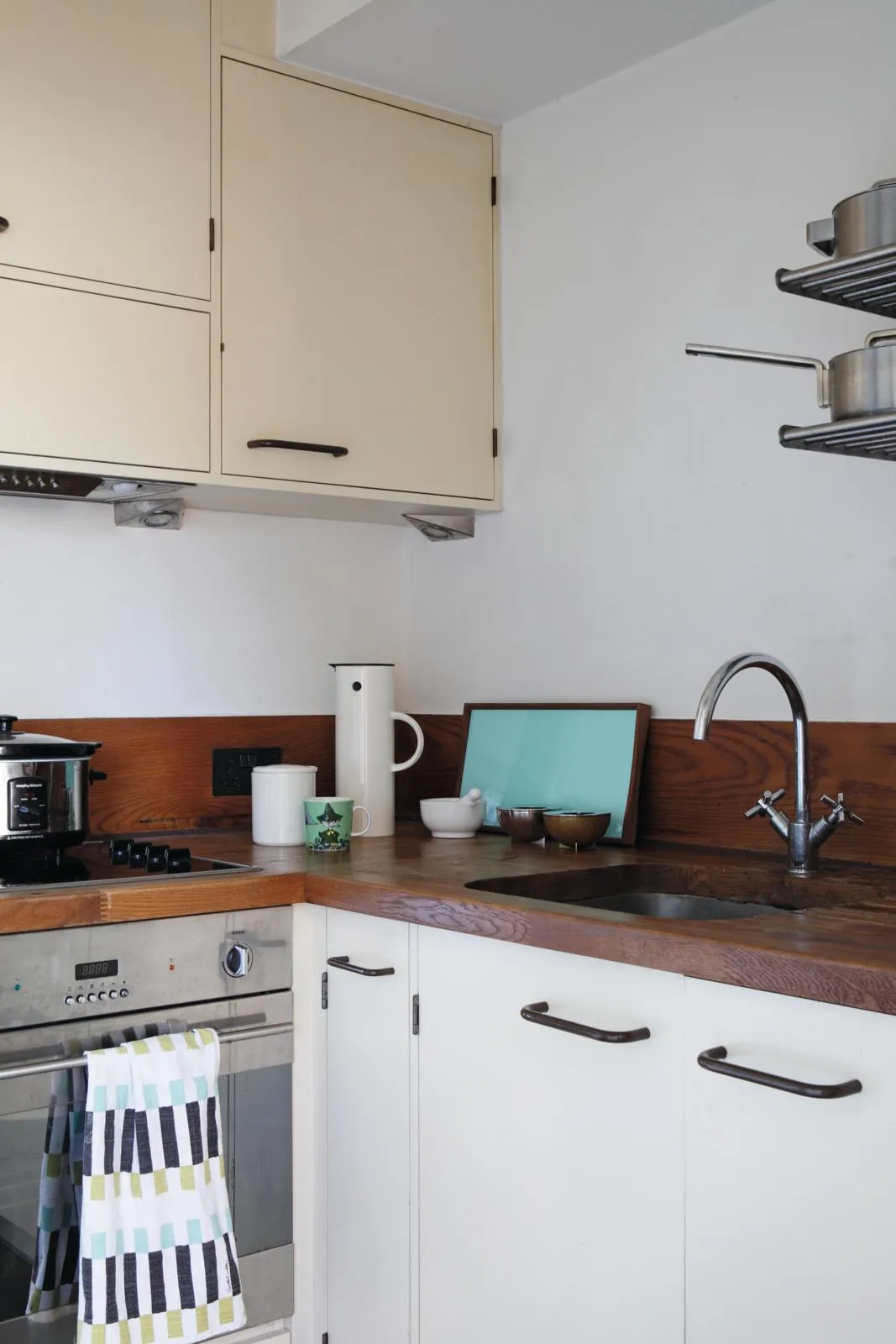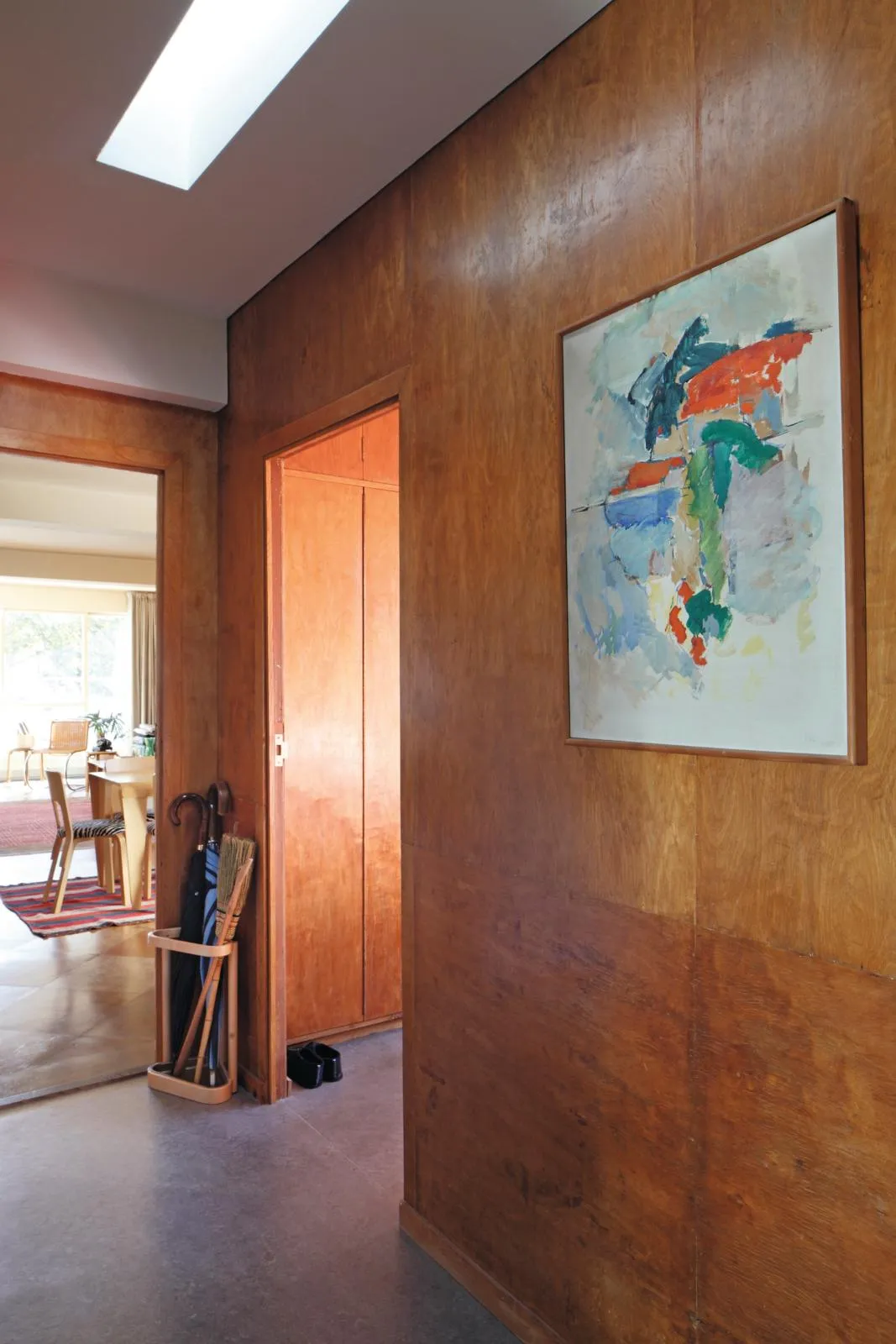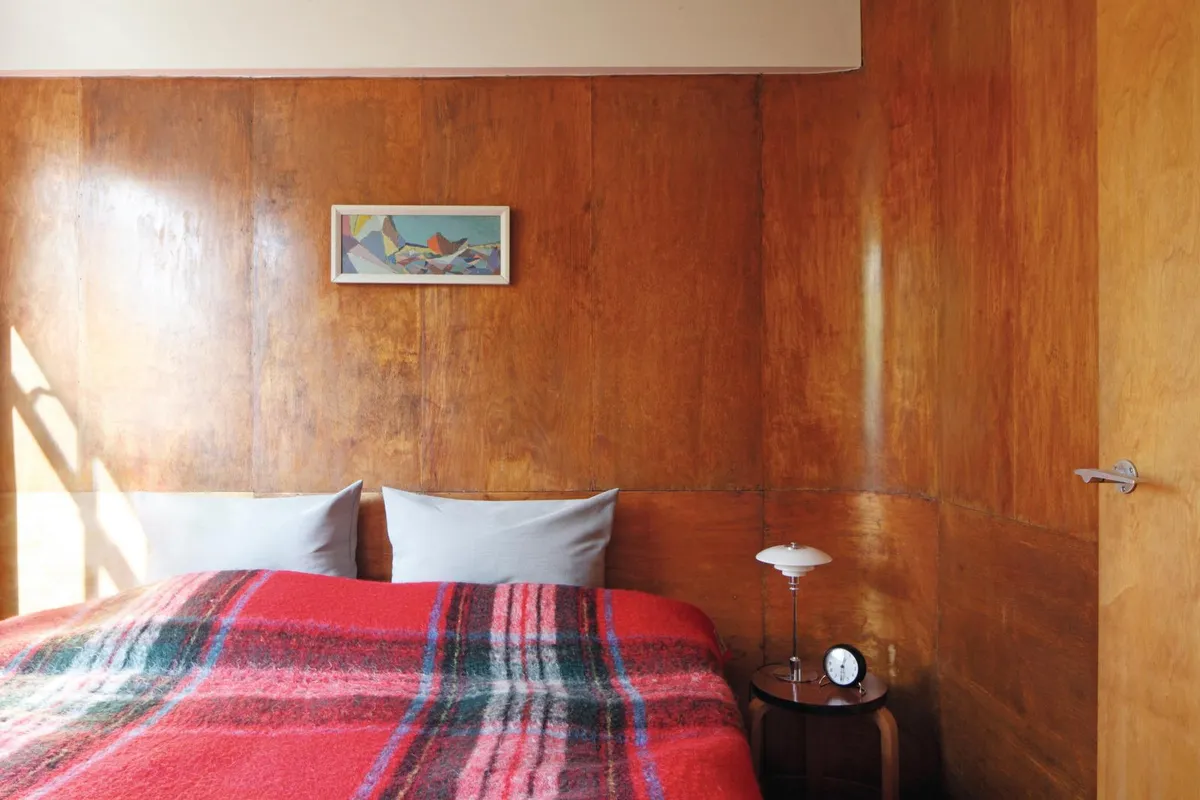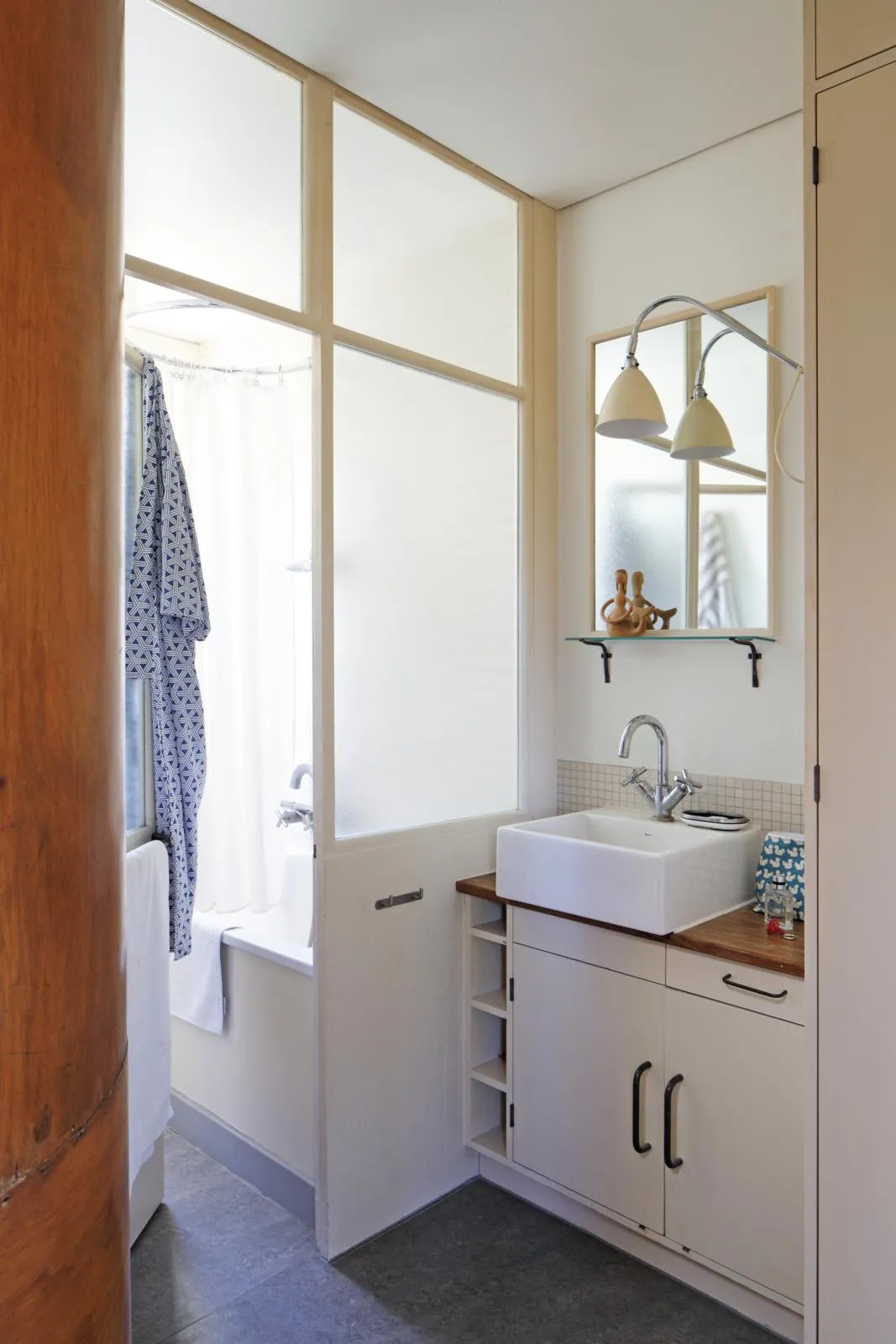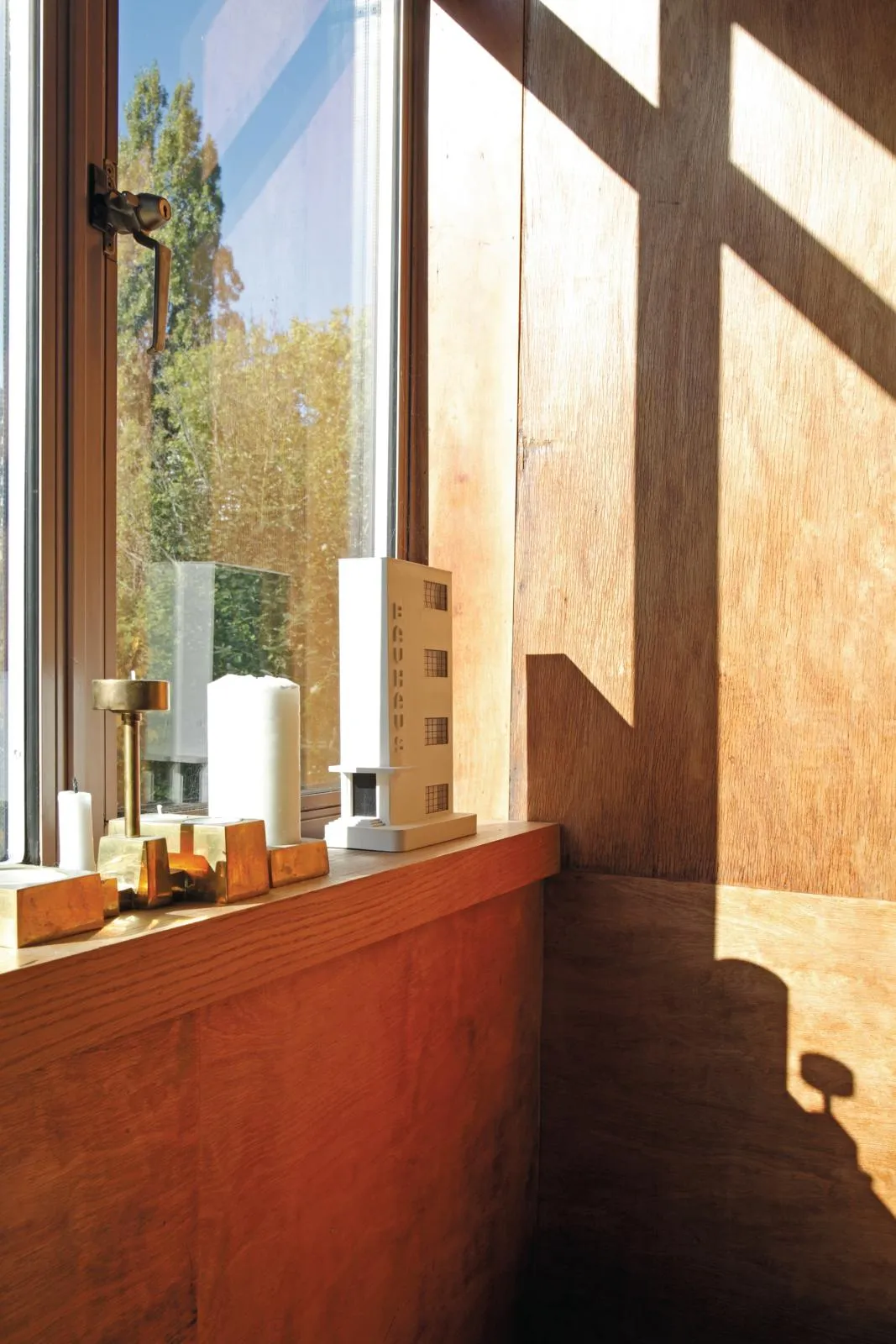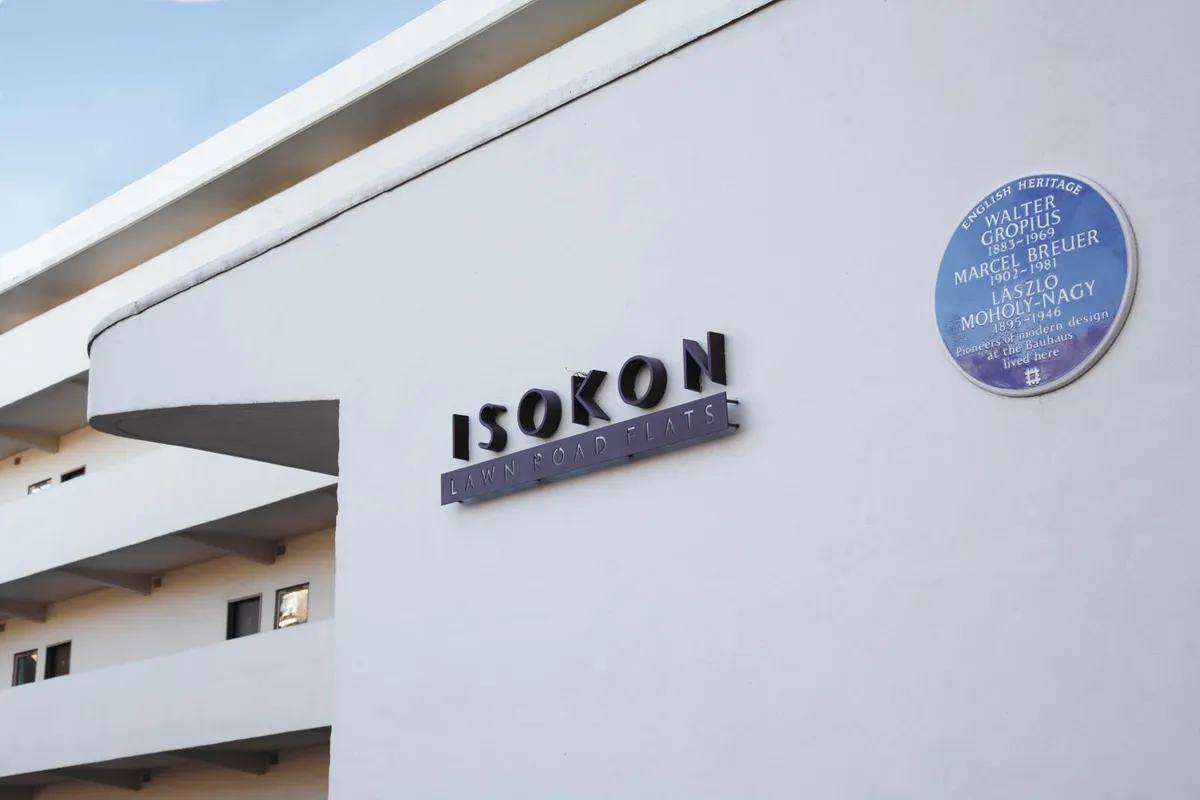While most of us would baulk at the restrictions of living in a Grade I-listed building, Magnus Englund positively revels in them. ‘We can’t change a thing,’ he says of the Isokon penthouse apartment he shares with his wife, Gjøril Reinecke. ‘Not the wall colour, the floors or even the door handles.’ The Isokon, also known as Lawn Road Flats, is a landmark of Modernist architecture in leafy north London and, for Magnus, a Swedish design expert and the building’s resident historian, living there is a privilege. ‘Every day spent here is a joy,’ he says.
His penthouse was once home to Molly and Jack Pritchard, visionary entrepreneurs who commissioned the radical architect Wells Coates to design the building. Built in 1934 and comprising 32 flats, the Isokon was the first time that reinforced concrete had been used in a British block of flats. Today, the building still stops you in your tracks: its smooth white façade and long walkways give it the appearance of a cruise liner adrift in a sea of Edwardian and Victorian villas.
‘Jack and Molly believed that well-planned, rational architecture could improve people’s lives,’ says Magnus. Built in response to the housing shortage in the 1930s, the flats were aimed at urban professionals, ‘who had cast off the clutter of the Victorian era and entered the sunlit uplands of Modernism.’
Back then, Hampstead was still a bohemian enclave and the Left-leaning Pritchards hosted lively salons. On balmy evenings you might find Modernist architect Maxwell Fry, the art historian Nikolaus Pevsner or sculptor Henry Moore locked in fiery debate on the terrace. After Hitler came to power, leading members of the Bauhaus – Marcel Breuer, Walter Gropius and László Moholy-Nagy – fleeing Nazi persecution, sojourned here adding to the neighbourhood’s cosmopolitan atmosphere.
You might also like a moody Victorian flat filled with art and antiques
Magnus’s latest book, co-written with Leyla Daybelge, explores the Isokon’s connection with Bauhaus and it has been a delight, he says, ‘to discover the exact spot where all these people once sat and stood.’
The layout of the compact but bright one-bedroom flat works well. ‘Wells Coates designed sailing boats and the studios at BBC Broadcasting House, so his knowledge of making small spaces work was unique,’ says Magnus. In 2004, the entire building was restored by Avanti Architects and made fit for 21st-century habitation after years of dire neglect.
The fittings are facsimiles of Wells Coates’ designs, whose attention to detail stretched to the D-shaped handles on the fitted kitchen cupboards. In the bathroom, the mirror is another Wells Coates design, while the industrial-style light was designed by Robert Dudley Best, of Best & Lloyd in Birmingham. The chequerboard floor, however, is original.
In its heyday, catering was provided by a dumb waiter, which ferried meals up the spine of the building from the Isobar restaurant, designed by Marcel Breuer and frequented by locals such as artists Ben Nicholson and Barbara Hepworth. ‘There was a real foodie scene going on,’ says Magnus. Fellow tenants also enjoyed shoe cleaning, bed making and window cleaning services provided by an apron-clad staff.
Although Magnus rents his flat, he takes his responsibilities as custodian of a legacy so seriously that he commissioned Nick Goldfinger (grandson of Trellick Tower architect Ernő), to restore the ply walls of the sitting room. The bedroom, which feels as snug as a ship’s cabin, still has the original built-in cupboards complete with their clever storage capabilities, such as an extending trouser rack.
You might also like the evolution of Isokon furniture
Through tip-offs from fellow experts, Magnus has tracked down examples of furniture, such as the set of nesting tables and the small Donkey bookcase, made by Isokon, the plywood furniture company that Jack established in 1931. In lieu of rent at the Isokon, Pritchard persuaded Bauhauslers Breuer and Gropius to design several bentwood pieces, such as the long recliner or dining table, which are still in production today.
Magnus, who grew up in Sweden and set up Scandinavian furniture store Skandium in London in 1999, is something of a ‘furniture geek’. His personal collection ‘reads like a timeline of 20th-century design’. There is a bedside table by Alvar Aalto, a white cupboard by Harri Koskinen for Skandium; the sofa was designed for Berthold Lubetkin’s Highpoint, in nearby Highgate.
But his interest isn’t limited to furniture: an abstract nude on the wall is by Stephen Cohn, who married Wells Coates’ daughter, Laura, and there are textiles by Eleanor Pritchard, a weaver inspired by Bauhaus, which add warmth and texture to the setting.
In 2014 Magnus raised funds to turn the Isokon’s garage into a museum.
Designed by Avanti Architects, it is a small but intriguing celebration of the building’s golden era and famous tenants, who included Agatha Christie and a ‘nest’ of spies working for the Russians. He wishes there were more Isokons being built now. ‘The Pritchards believed that good design could create a sense of community. Its message is still relevant today.’
The Isokon Gallery in the garage is free to visit.

